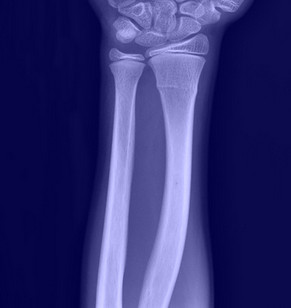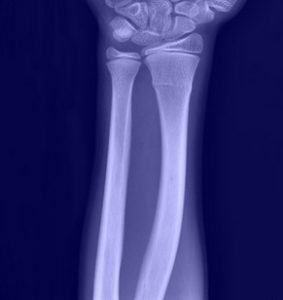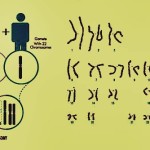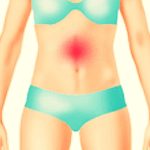You have heard of the term ‘fracture’ and probably you know what it means. Simply, it means breakage of bones. Now there is this term ‘greenstick fracture’- have you heard of it? Probably yes, maybe no! Well, whether you have heard of the term or not, you shouldn’t be worried because in this piece, we are going to talk about it and what it means. Fractures occur when the bone’s tensile strength is overcome by a deforming force that acts on the bones. Different types of fractures exist and they are based on the bone part in which they occur as well as the mechanism by in which they occur. To understand what greenstick fracture is, you may want to think of the ‘green’ stick and how it breaks when you bend it.
Greenstick fracture involves a bone bending and breaking, but instead of breaking into two separate pieces, it breaks the way a ‘green’ branch of a tree would do. This form of fracture is also referred to as ‘partial fracture.’ Greenstick fractures tend to happen in young, softer bones, so you will find them occurring mostly in children aged about 10 years or less.
Greenstick fracture may be regarded as incomplete breakage of the bone in which a transverse fracture line occurs causing disruption of the bone’s cortex or the outer layer of an individual’s bone that extends onto the medulla or core of the same bone without causing disruption to the opposite cortex. So, the discontinuity is found on one side only.
Greenstick fracture is a childhood fracture mainly witnessed in children that are less than 10 years because they tend to have soft, flexible bones. However, the fracture isn’t exclusively associated with children or childhood, there have been cases where adults have had same kind of fractures, especially in forearms. Therefore, the morphology of an individual’s bone may be a main factor in greenstick fracture.
When you grasp a tree twig or a young twig and attempt bending it or breaking it, you will realize that a section of it will break and the other side remains stressed out without necessarily breaking. This gives you an analogy of how greenstick fracture occurs.
Greenstick fractures are a form of pediatric fracture. Mainly pediatric fractures are classed into incomplete and complete where the former involves partial breakage of the bone structure and the latter involves complete breakage of the bone structure. Incomplete fractures may occur as greenstick fractures, torus fracture or buckling fracture, and bow fracture.
Symptoms of Greenstick Fracture
Depending on the severity of the fracture, there may be different signs and symptoms of the fracture. A mild fracture may at times be mistaken for a sprain or just a bruise but a severe form may lead to deformity and extreme pain or swelling. There are greenstick features that resemble the ones you see in standard long bone fractures and they include:
- Having pain within the area of fracture
- Having bruises
- Having tenderness and redness
- Inflammation and swelling
- Having restricted movement in the part of body affected by the fracture.
Like many other fractures, a person with greenstick fracture will complaint of pain. Having intense pain in an injured area should raise suspicion. When greenstick fracture is just mild, it presents with signs like a simple bruise accompanied by redness, swelling, and warmth. An obvious deformity of an individual’s limb will occur when the fracture is severe. The fractures tend to be common in upper limbs than they are in lower limbs.
Causes of Greenstick Fracture
This type of fracture is caused by a similar force to that which causes other fractures, for example, it may be caused by a forceful impact happening to the bones. A fall, twisting force, or a blow may result in such a fracture. Children love playing outdoors and involving themselves in physical activities, so they are prone to injuries. Although different kinds of forces can bring about fractures, when it comes to greenstick fractures, falling from heights is said to be the commonest cause among kids. Children engage heavily in jumping activities putting themselves at risk of having frequent falls that may cause the fractures.
Greenstick Fracture Involving the Clavicle
When a person experiences a fall with their hand outstretched or have a direct blow to their upper chest as well as shoulder, a fracture of the clavicle may occur. Because clavicle fully matures and hardens only after a person has attained 20 years of age, it is likely that greenstick fracture involving this part of the body will happen even in people in adolescence age. The clavicle is also referred to as the collarbone, and it’s a long bone serving as a strut between the breastbone or sternum and the shoulder blade. It is the only long bone found in the body that lies horizontally.
Greenstick Fracture Involving the Wrist
When there is greenstick fracture occurring on the middle third or lower third of radius or the bone in forearm called ulna, then it may be referred to a fracture involving the wrist. The fracture may happen after a child falls flat on flat surface with their outstretched arm or it may happen when there is impact to the palm as a child falls from height. If there is direct blow to a child’s forearm, it may result in a greenstick fracture occurring in the middle third and upper third of radius or ulna.
Greenstick Fracture Involving the Tibia
In tibia, a greenstick fracture may occur when a child or a person lands on foot after falling from height. It may also occur because of a blow to the leg. The force that is required to cause fracture to the tibia is usually higher compared to the force needed to cause fracture in ulna and radius. You will find that a majority of the fractures occur in the lower third and middle third of tibia shaft.
Diagnosis
A doctor performs a physical exam to look for swelling, tenderness, numbness, and deformity. He or she may also check for nerve damage that’s likely to accompany bone injuries. The doctor may ask the child to wiggle his or her fingers and perform other similar tests. Because greenstick fracture does not present in the same way as the standard bone fracture, doctor and parents find it difficult to detect it. It is also difficult to differentiate the fracture from conditions like soft tissue injury like a bad bruise or sprain.
In diagnosing the fracture, a doctor uses imaging tests like CT scans or X-rays. Usually, the images for the uninjured limb are taken and compared with those of the injured limb. This helps to reveal any abnormalities that may not be associated with a fracture. Such abnormalities could have remained undetected, but they are revealed by the images. Because greenstick fractures within soft bones may not show up vividly in X-rays, doctors may use CT scans that tend to be more reliable in providing imaging results. Doctors can also use ultrasound to get better images.
Greenstick Fracture – Treatment
If a child has greenstick fracture, a doctor is going to subjugate it by calmly pulling the bone apart (not so much but just a little bit) and then pushing it into position. The pulling and pushing into position helps to straighten the bone so that it takes the form it was before fracturing. A cast is placed on the limb to restrict movement or immobilize it thus helping the bone to grow back.
Removable splint may be used and it allows a child to take off the splint when he or she is bathing or showering. Distal radius fractures may respond well when splints are used for treatment. Where healing doesn’t take place as intended, surgery may be applied.
Greenstick fractures will heal after about 30 to 60 days following treatment. The healing time will mostly depend on how severe the fracture is, the bones that were involved in the breakage, and the age as well as general health of a child.
Aftercare
To help the broken limb heal properly and fast, you need to make sure a child observes the homecare tips. OTC medications may be prescribed to ease pain. The child should not be given aspirin to manage pain, it can prevent blood clotting, which is essential during the healing of the fractured bone. Ibuprofen may not be used in a child who is less than six months. The plaster cast, splint, or boot should be kept dry.




❤️ Samantha liked you! Click Here: http://bit.do/fSUSV ❤️